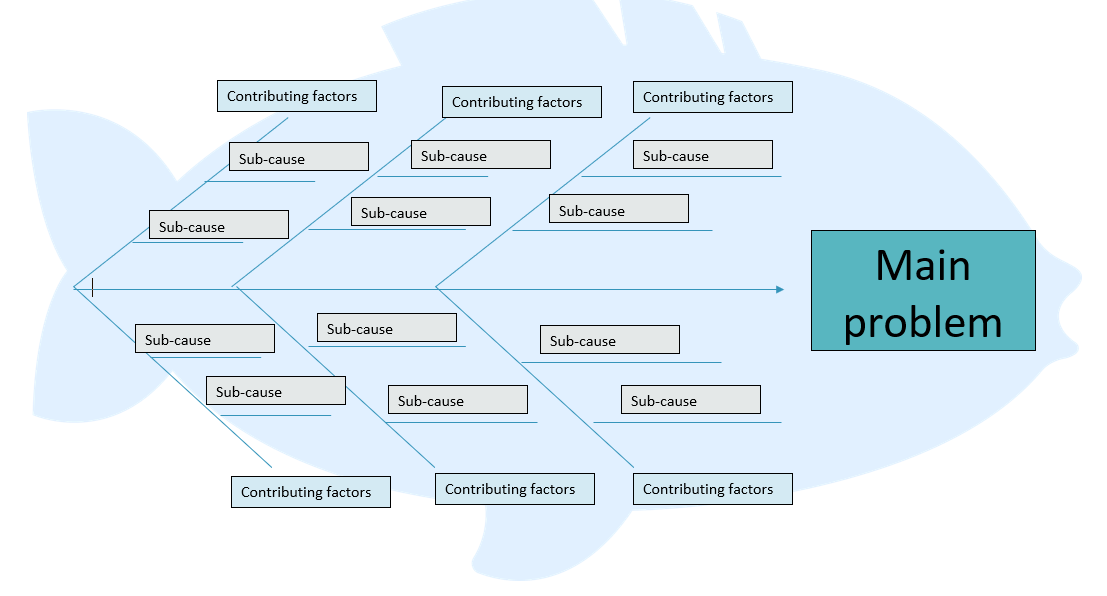

It is well documented 67% of well formulated strategies fail. Whilst much of this analysis is rooted in issues with strategy execution, what if companies were not solving the right problem to start with? Could this impact whether strategies are successful?
This idea problem solving being an issue was researched by Thomas Wedell-Wedellsborg’s whose study found that 85% of those who strongly agreed or agreed that their organisations were bad at problem diagnosis, and 87% strongly agreed or agreed that this flaw carried significant cost.
In this blog we break down what a diagnostic sprint is, why they are crucial to accurately diagnosing business problems and creating a groundwork to enable business success.
A diagnostic sprint is a structured and time-bound process designed to quickly identify and address challenges within an organisation or project.
Unlike traditional problem-solving methods, which can drag on for weeks or even months, diagnostic sprints compress the problem-solving timeline into a focused and intensive session lasting just a few days.
By bringing together diverse perspectives and abilities, diagnostic sprints use teams' collective intelligence to generate actionable insights and solutions.
Diagnostic sprints align with an active strategy approach in which you can plan for the shorter term but also be flexible with long term changes in the market.
A B2B client we worked with a few years ago initially faced challenges with lead generation, so we conducted a diagnostic sprint to understand how we could improve online conversions.
During the Diagnostic Sprint we found that the sales process (following expansion of the business) was fragmented, and quality leads were not being nurtured through a sales process.
This example shows the truth in Thomas Wedell Wedellsborg’s findings as the problem in this case was originally diagnosed as a conversion one, and the willingness to invest money in advertising would likely make the problem worse in the short term.
Based on the data, investing more in driving lead conversion would eventually be the correct thing to do, but only if the sales process is improved first.
Diagnostic sprints can not only help diagnose the problem but also help define and prioritise a solution.
We create a unique sprint for clients based on the nature of the problem.
We have listed some problem diagnose techniques you can also use as part of your own sprint:
The Five Whys technique is straightforward and can be applied in various contexts, from manufacturing and quality control to software development and project management. It encourages a deeper understanding of problems and helps teams find more sustainable solutions by addressing underlying issues rather than just treating symptoms.

A cause-and-effect diagram created by Kaoru Ishikawa it was originally used to solve quality control issues in manufacturing. It is extremely useful for problem diagnosis as it uncovers root causes as opposed to symptoms of the problem.
At Distinction, our diagnostic sprint sits under the Diagnose part of our three-phase process.

We have used this approach to provide results for hundreds of clients for over twenty years.
The benefits of diagnostic sprints extend far beyond just solving immediate challenges. Here are some of the key advantages that organisations can experience:
Diagnostic sprints enable organisations to identify and address issues rapidly, reducing the time it takes to implement solutions and achieve desired outcomes.
By compressing the problem-solving timeline, diagnostic sprints help organisations stay agile and responsive in dynamic environments.
One of the hallmarks of diagnostic sprints is their collaborative nature. By bringing together stakeholders from various departments and disciplines, diagnostic sprints foster teamwork, communication, and knowledge sharing.
This collaborative approach not only leads to better problem-solving but also strengthens relationships and builds trust among team members.
Diagnostic sprints rely on data and evidence to drive decision-making processes. By collecting and analysing relevant data during the sprint, organisations can make informed decisions based on objective insights rather than subjective opinions or assumptions.
This data-driven approach increases the likelihood of success and reduces the risk of costly errors.
By quickly identifying and re-framing problems you can reduce the likelihood of investing time and resources in solutions that may not meet user needs or business objectives.
Diagnostic sprints stimulate creativity and innovation within teams by providing a structured framework for brainstorming, experimentation, and problem-solving.
By encouraging out-of-the-box thinking and embracing failure as a learning opportunity, diagnostic sprints allow us to explore latest ideas and approaches that can drive meaningful change and competitive advantage in your business.
The outcome of a Diagnostic Sprint always includes a roadmap for us or you to implement.
Diagnostic sprints offer a structured and efficient approach to problem-solving that can yield significant benefits for organisations.
They can work incredibly well with both nested and problem-based strategy approaches and the formulation of a roadmap.
If you have a problem that you want to talk through, get in touch today.